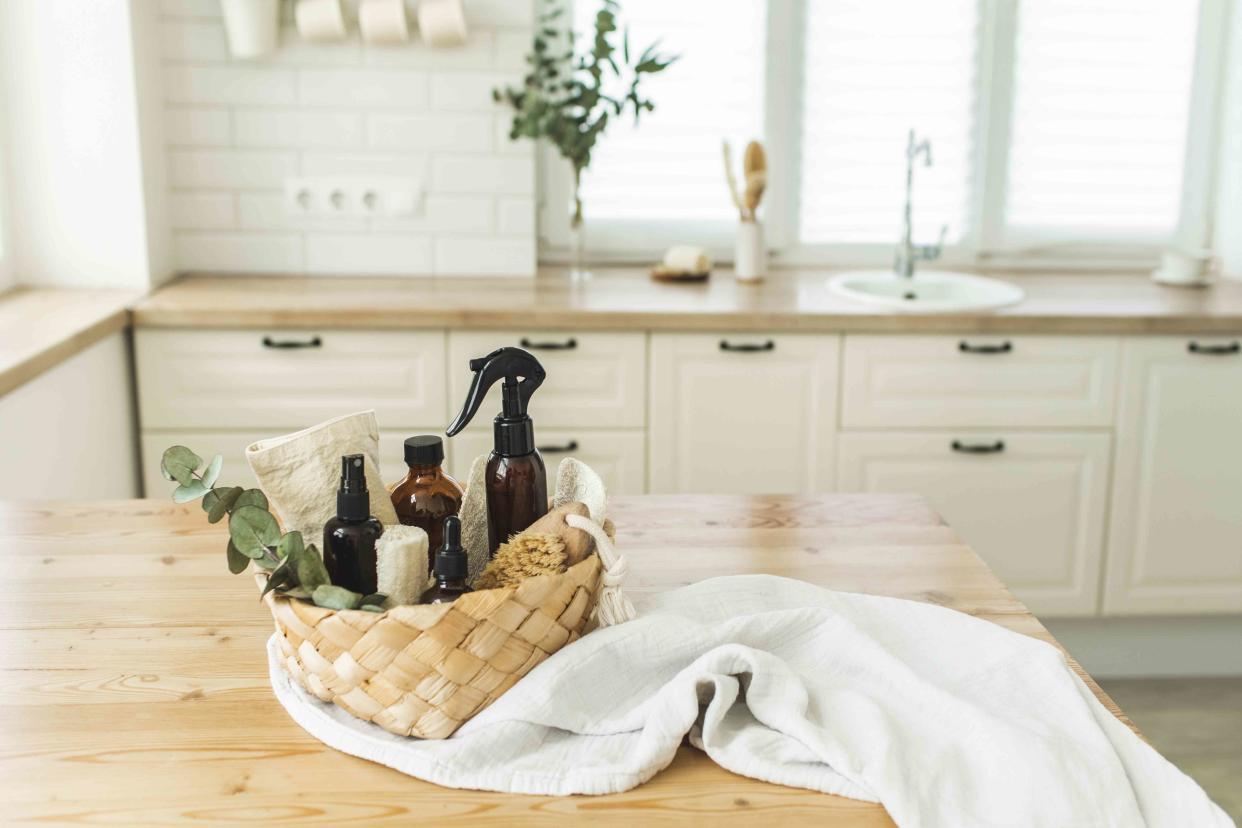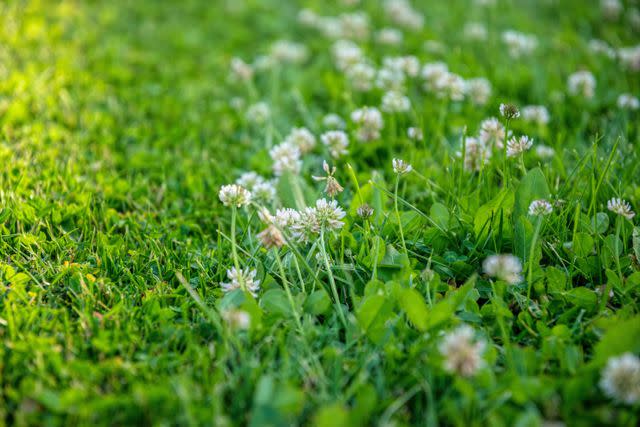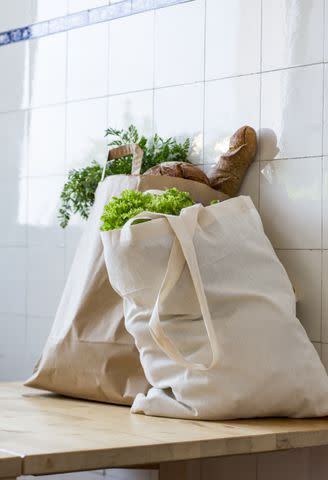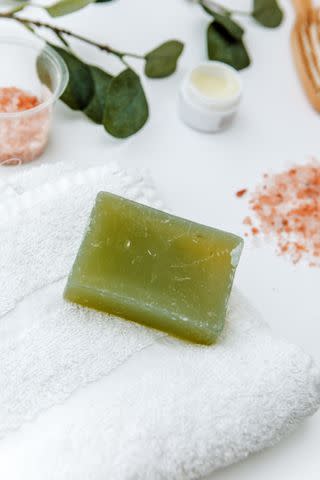11 Actually Easy Ways to Be More Sustainable at Home, According to Experts

Anastasiia Krivenok
Living sustainably can be made up of small actions you take every day that add up to a big impact. Switching out your light bulbs or skipping a week mowing your lawn may not seem like a big deal, but it is all part of your sustainability journey. And if everyone pitches in and does the little things, it adds up to something big.
We asked experts for their tips to get you started on living a more sustainable life at home every day.
Use Eco-friendly Cleaning Products
“Many household cleaning products contain harmful chemicals that are not only bad for the environment but also for your health,” says Jhánneu Roberts, Sustainability Expert at Opendoor Eco-Forward Cities.
She suggests switching to eco-friendly cleaning products, including vinegar, baking soda, and castile soap. Roberts explains, “These eco-friendly products can help reduce the amount of toxic chemicals in your home and minimize your impact on the environment.”
Switch to LED Light Bulbs
Roberts suggests replacing incandescent light bulbs with energy-efficient LED bulbs to reduce energy consumption at home.
“LED bulbs use up to 80% less energy than traditional bulbs and last up to 25 times longer. While they may be more expensive initially, the long-term savings on your energy bill make them a smart investment,” says Roberts.
Mow Your Lawn Less Often
“Lawn mowers generate five percent of all US air pollution, according to the EPA, because their two- and four-stroke gas engines are much less efficient than car engines,” says Heather Evans, a master gardener and writer of The Avant Gardener Substack.
She recommends mowing less to encourage healthier, deeper-rooted turf and reduce the need for irrigation.

Getty Images/Konoplytska
Plant Pollinators and Encourage Biodiversity
“Biodiversity loss is a growing concern. Find ways to support local biodiversity with eco-friendly lawn alternatives, pollinator plants, and bird feeders,” says Alannah Hardcastle, Social Impact Manager at Random Acts of Green.
Curious about what those lawn alternatives might be? Clover lawns provide that lush green look without the necessary watering of traditional turf lawns. Plus, encouraging biodiversity doesn’t have to be a high effort activity. It can start simple by planting native pollinator seeds or letting the weeds in your lawn fill in where grass can’t survive.
Keep the Reusable Bags Where You Need Them
How many times have you gotten to the grocery store only to realize you don’t have your reusable bags? Katherine Berg, founder of Will & Atlas, recommends keeping your reusable bags where you are when you actually need them. If you typically walk to the grocery store, try keeping a flat fold-up bag in the pocket of your go-to jacket or even in your wallet.

Getty Images/EMS-FORSTER-PRODUCTIONS
Burn More Sustainable Candles
Opt for natural candles that release fewer toxins into the air and are made from biodegradable, renewable sources, including beeswax and soy wax, while being free of phthalates, parabens, and other potentially harmful ingredients.
Tamara Mayne, owner, founder, and Creative Director of Brooklyn Candle Studio, recommends going a step further—once you’ve burned your sustainable candle, repurpose the vessel. She suggests using them for coffee, cocktails, planters, pencil holders, and makeup organizers, giving them another sustainable second life.
Opt for Sustainable, Secondhand Furniture and Clothing
Keep clothing out of landfills by buying less and buying intentionally. Want a new sweater? Check out secondhand options before heading to the department store. “Choose quality over quantity by investing in timeless pieces that are made to last, rather than buying into fast fashion trends," Berg says.
This goes for furniture and home goods, too. Hardcastle recommends shopping at your local library, buy nothing groups, community buy/sell/trade boards, and thrift stores before buying items new.
Use Zero Waste Cleaners, Detergent, and More
Some of the biggest plastic offenders at home are cleaning bottles, dish detergent bottles, and other liquid vessels. Instead, look for zero waste options, like multi-purpose cleaning concentrate or bars, laundry detergent sheets, toothpaste tablets, and other clever ways to avoid the plastic containers.

Getty Images/Carol Yepes
Install a Programmable Thermostat
You don’t need to spend money or energy heating and cooling your home when you’re not there. That’s why Roberts recommends installing a programmable thermostat.
“A programmable thermostat allows you to set your heating and cooling system to turn off or reduce its energy consumption when you are not at home or sleeping,” explains Roberts.
It’s better for the environment—and your wallet.
Introduce Recycled Rainwater Into Your Routine
You can still have your hydration-loving plants, if you have a plan to water them without resorting to running the sprinkler or filling up a watering can from the garden hose.
“Recycle rainwater using gutters and rain barrels, or create berms and swales to guide the water if gardening on a slope," says Eloisa Lewis, Climate Scientist and founder of the climate think tank, New Climate Culture.
Grow Your Own Herbs and Vegetables
When you grow your own herbs and vegetables at home, you’re cutting down on the carbon emissions required to transport them from farm to your home, making it a more sustainable choice. And you don’t need your own at-home farm to do that.
“You don't need outdoor space to grow your own herbs and vegetables. Many herbs and vegetables can be grown indoors in small containers or hydroponic systems," says Roberts.
Read Next:Eco-Friendly Design Ideas You Can Do Without Remodeling

